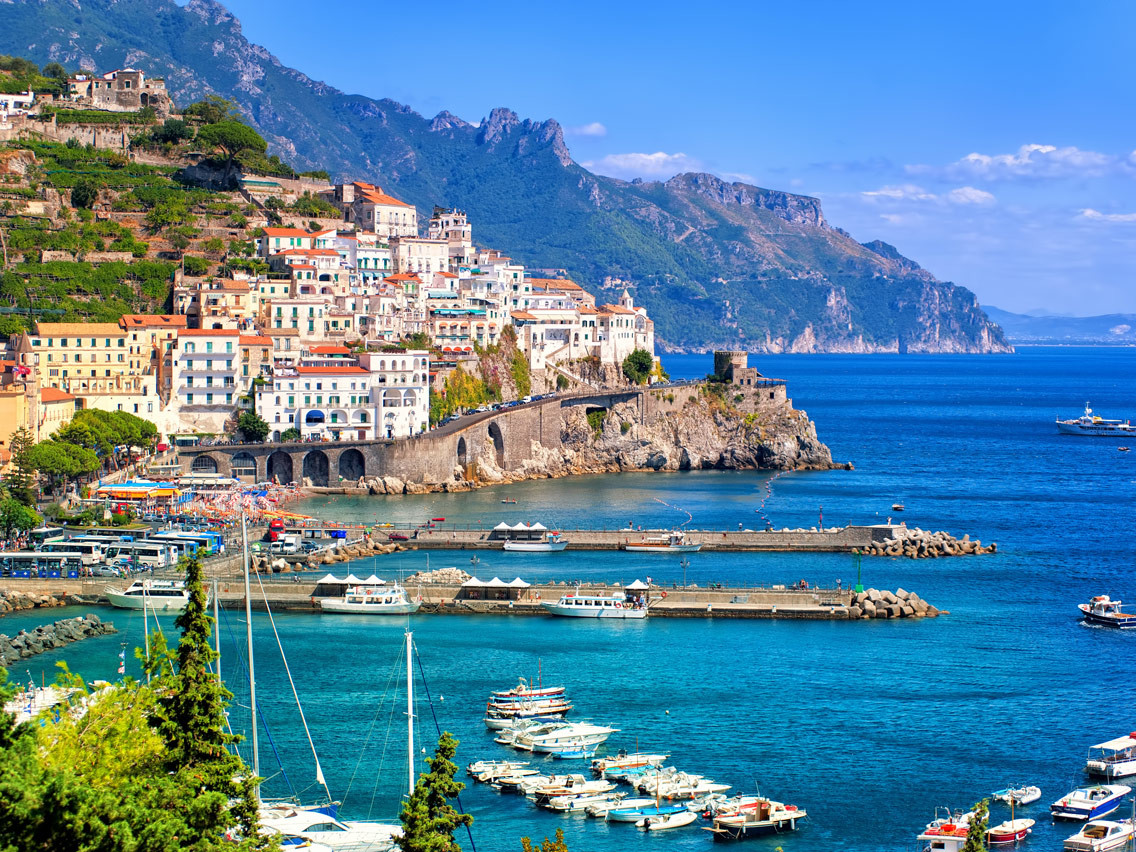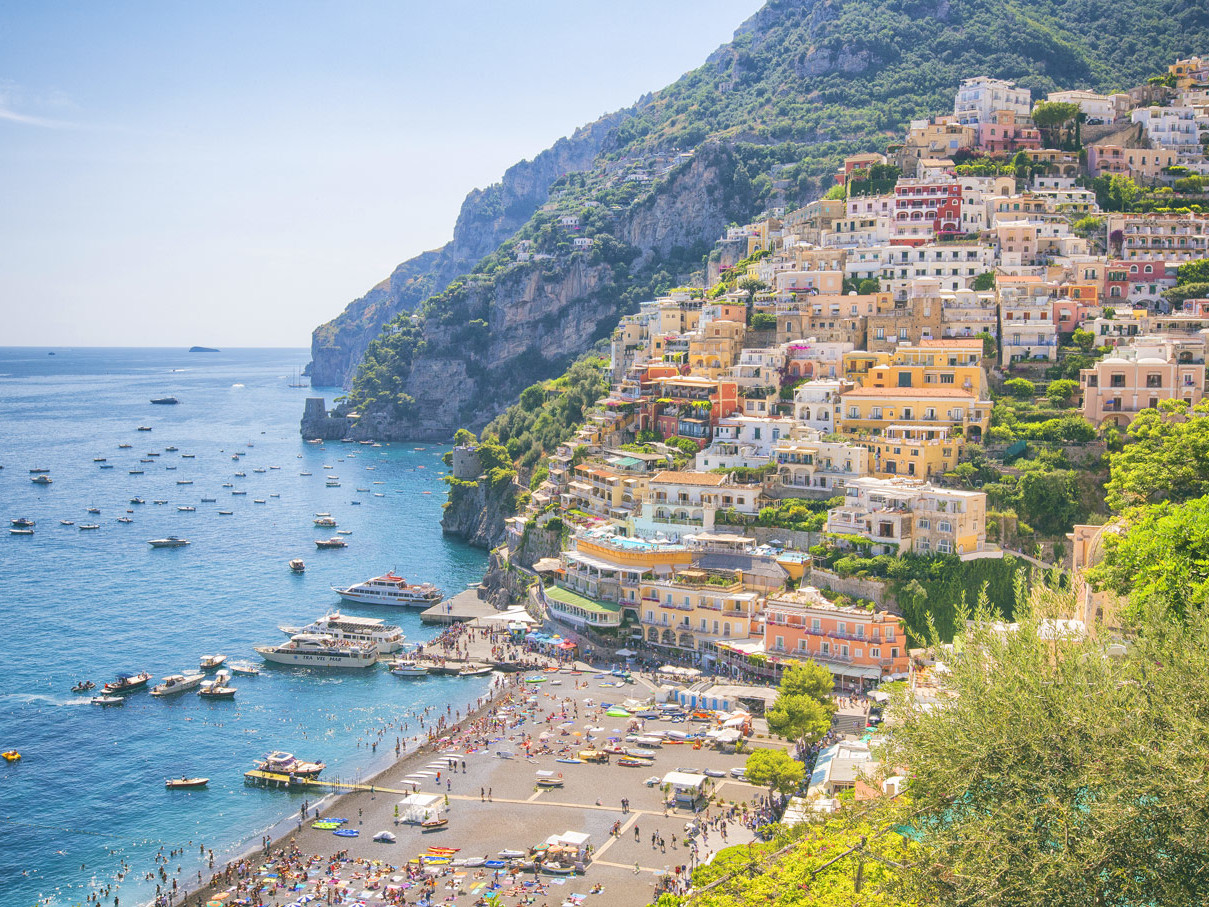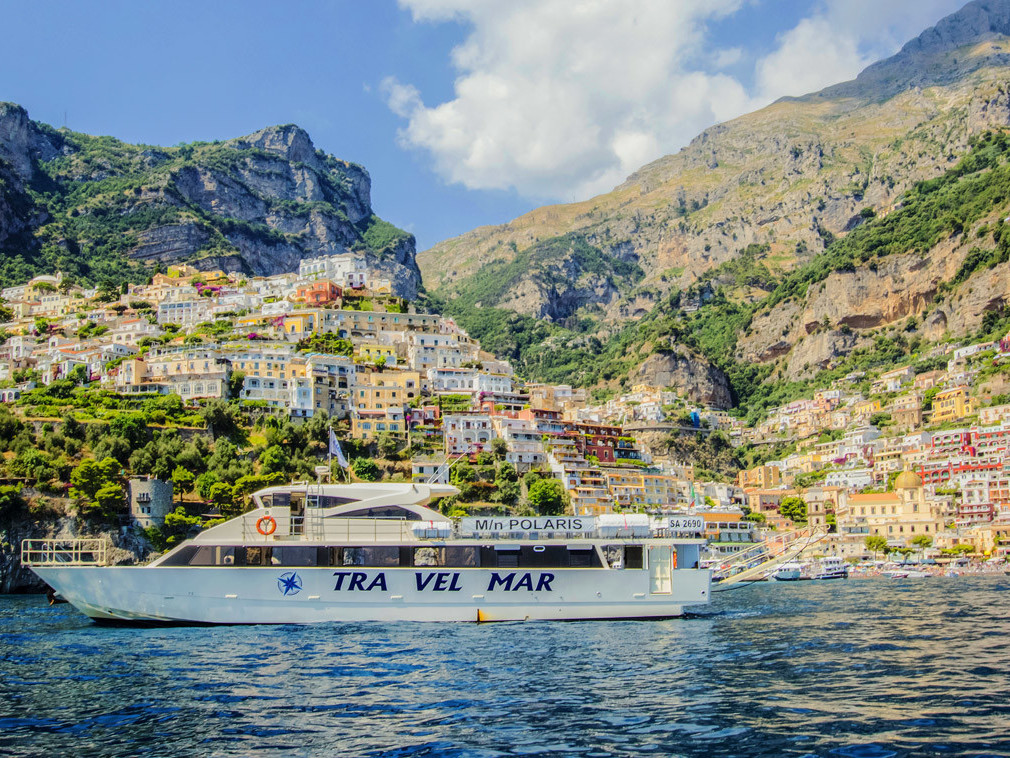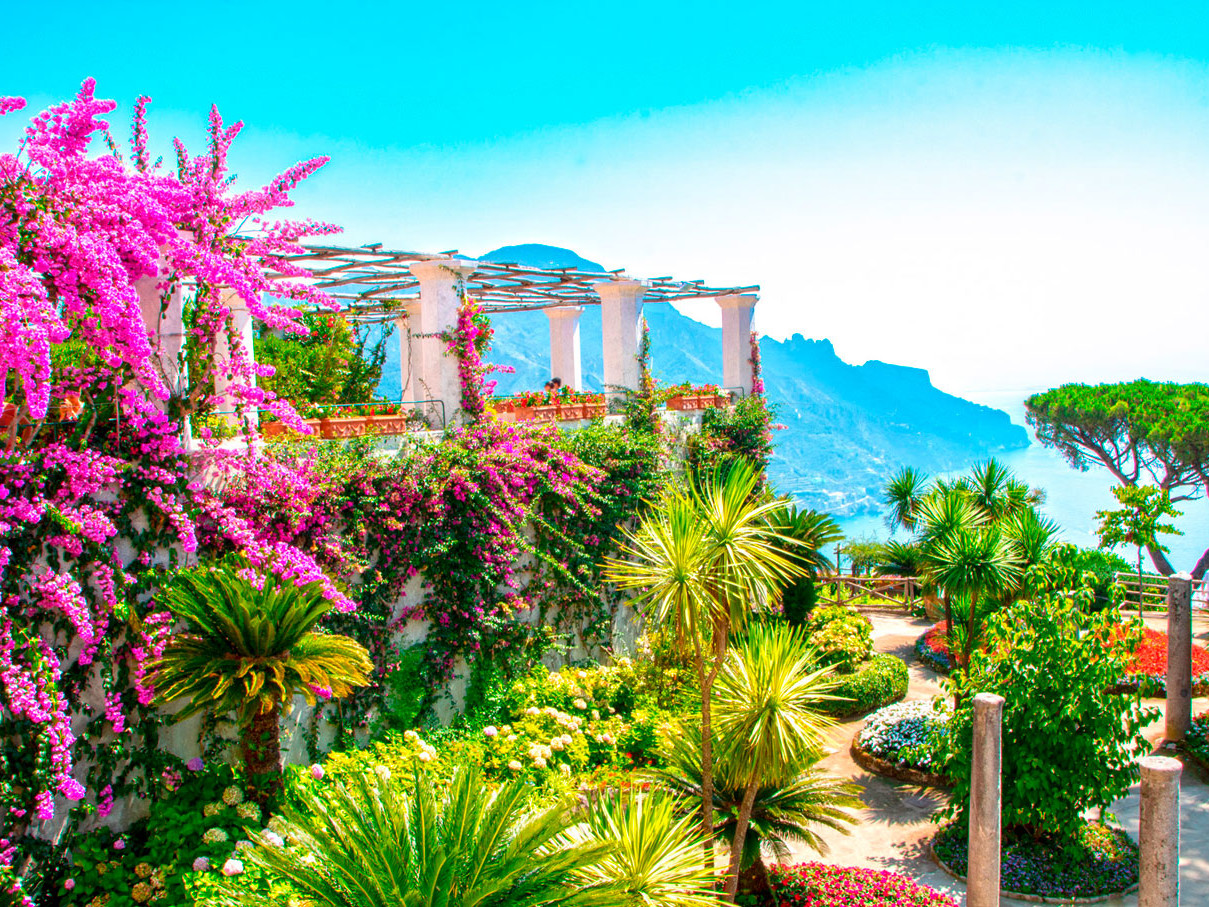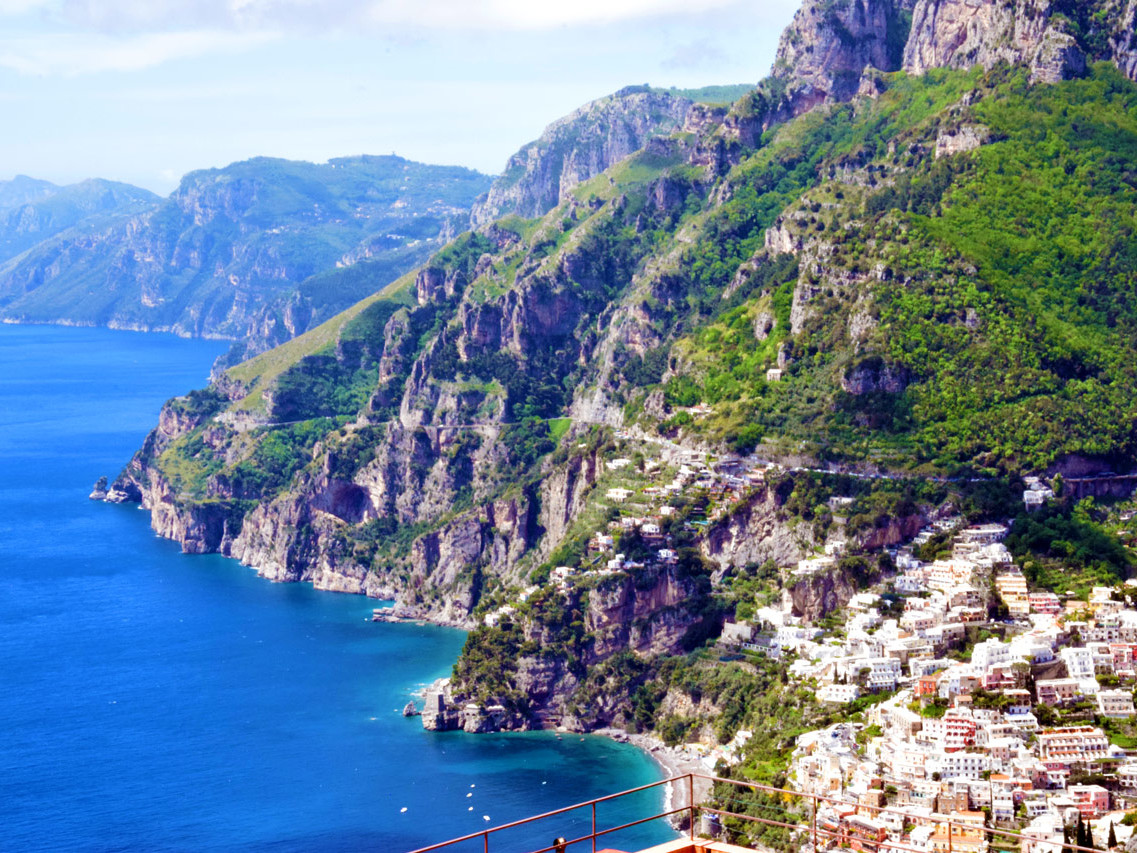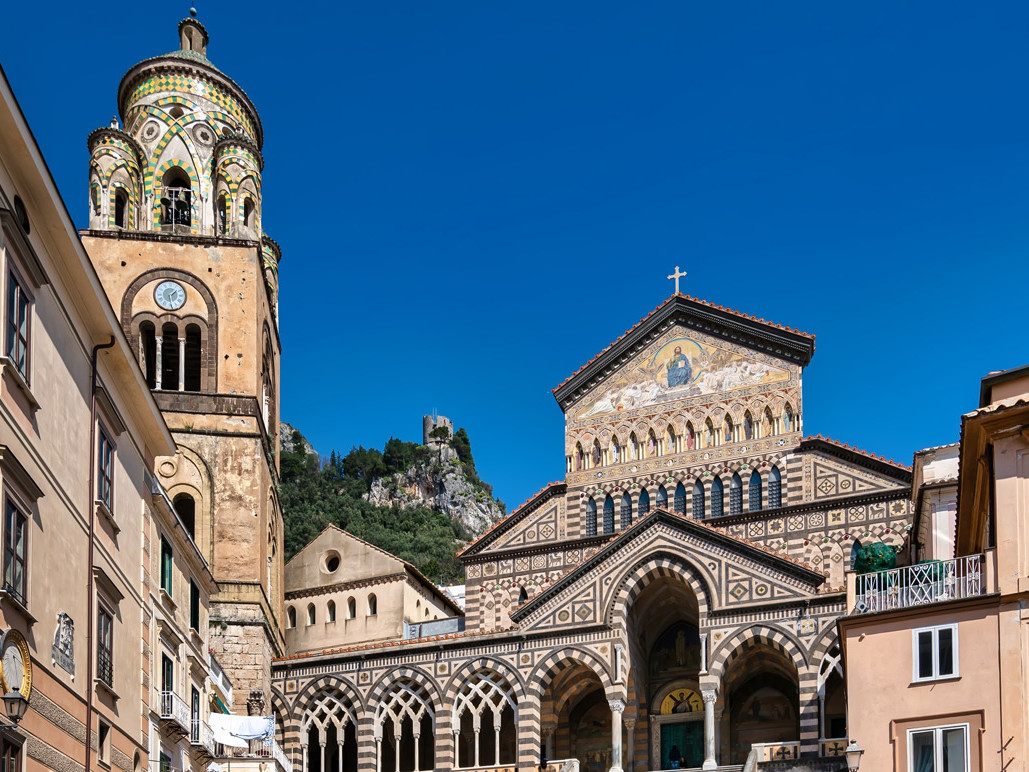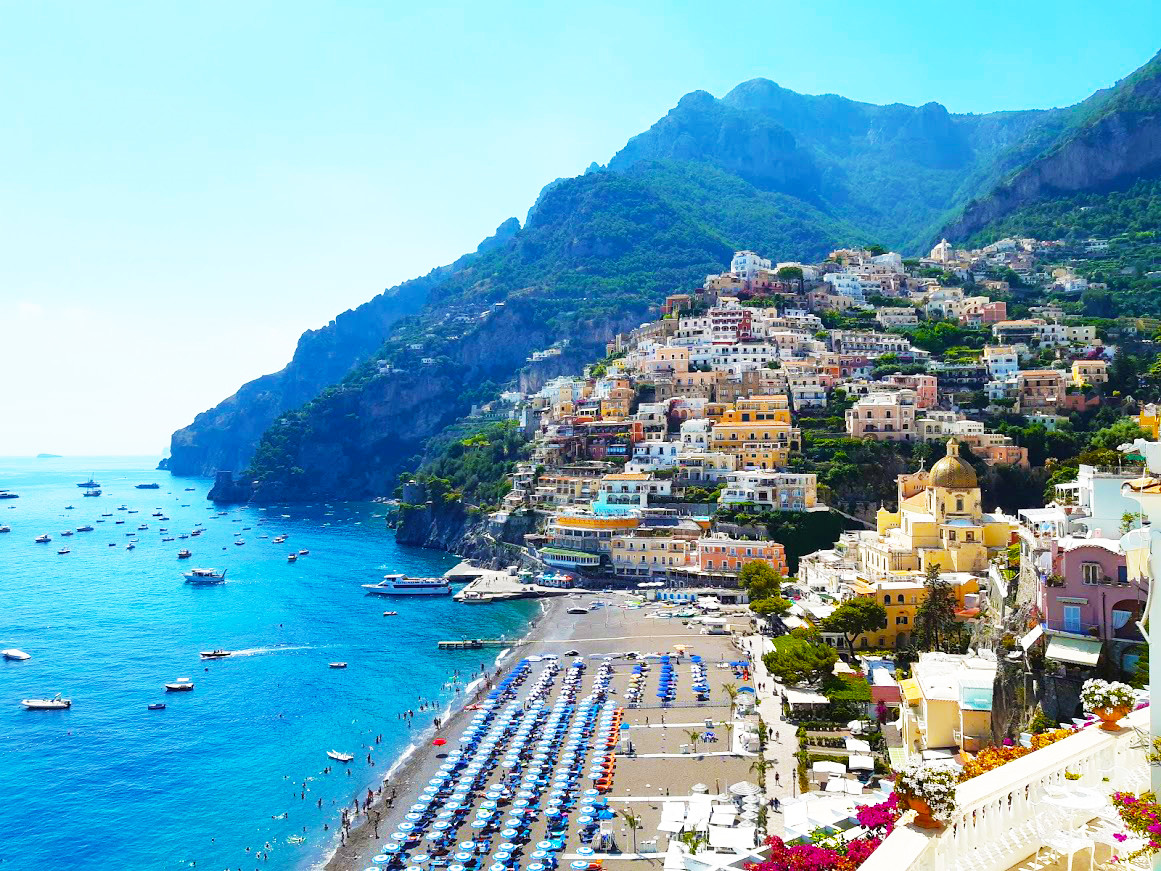TRACES OF THE PAST: THE ARCHEOLOGICAL SITES IN THE AMALFI COAST AND ITS SURROUNDING
If you are an archeology enthusiast, you need to visit the Amalfi Coast! Here you'll find sites of great historical and cultural interest located right on the "coast of the gods" and its surroundings.
by Roberta Cascone
Nowadays, The Amalfi Coast is one of the international jet set's favourite tourist destinations, loved for its panoramic, natural and architectural beauties. On the other hand, only few people are aware of its millenary history, that sets roots in Roman times, and above all of the traces that it has left all along the territory, which are sometimes far from the busiest tourist attractions and very little enhanced.
Let's discover together the archeological sites and the other historical remains of the Amalfi Coast and its sorroundings!
share this article
Pompeii - The frescoes of Villa dei Misteri (Villa of the Mysteries)
The Roman Villa in Minori
Built at the beginning of the 1st century A.D., the Roman Villa in Minori is an incredible example of a rich maritime villa, provided with thermal quarters and ceremonial rooms. It was discovered by chance in 1932, while restoring a private house, and to this day some ancient structures, surrounded by the modern buildings really close to the sea of Minori, are still visible. Originally, it consisted of two or even more levels: at ground level there was a triclinium, a dining room, that opened on the viridarium, a garden with a central pool, enclosed in a triporticus of brick pillars; on the first floor, today, the Antiquarium collects frescoes and other archeological materials found in the area. There are still traces of the pompeian style decorations to be admired, as in the colours of the arches: red and yellow on the walls, and black at the bases of the pillars. The thermal quarters are really interesting too: they used to be supplied by the Reginna Minor stream and are made up of the changing room (apodyterium) and of the rooms suitable for the warm baths (tepidarium) and for the hot ones (calidarium). The villa is open to visitors every day except for Mondays and the admission is free.
The You Tube channel of the Italian Minister of Culture has published an interesting video of the virtual reconstruction of the Roman Villa in Minori.
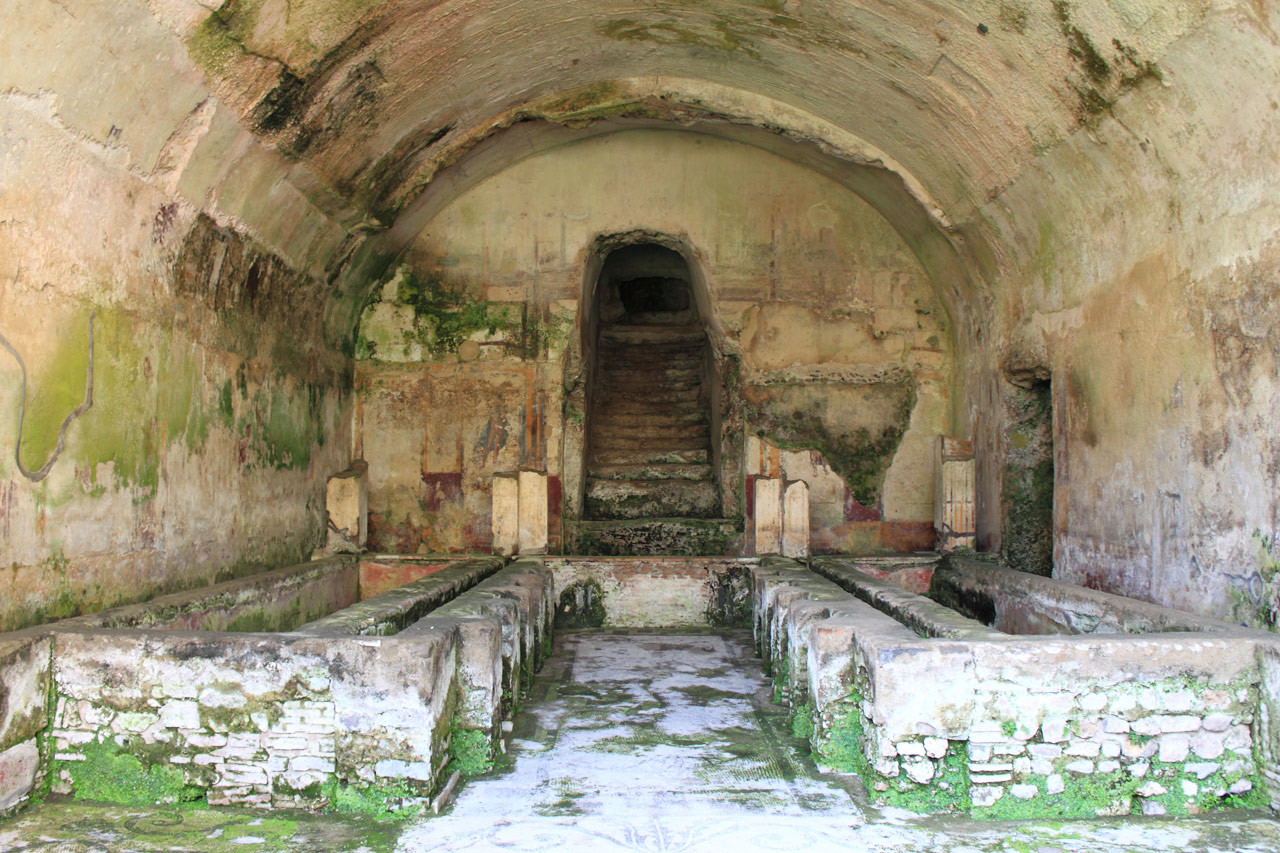
The Roman Villa in Positano
While the first evidences of the villa d'otium in Positano go back to the 18th century, the excavations have been carried out only at the beginning of the 21st century.
The villa is located below the SS. Maria Assunta church and was destroyed by the eruption of Mount Vesuvius in 79 A.D. The academic Matteo della Corte has attributed the villa to an emperor Claudius' freedman, whose name was Posides Claudi Caesaris, from which the town of Positano presumably gets its name. To this day it is possible to visit the triclinium, the dining room, decorated with a mosaic floor and IV pompeian style frescoes. What is really impressive in this archeological site is the 40 centimetres shift of the upper part of a wall in the same triclinium, which cuts in half the painting and represents a tangible and spectacular proof of the violence of the eruption.
The villa is open to the public everyday and can be visited after buying the admission ticket.
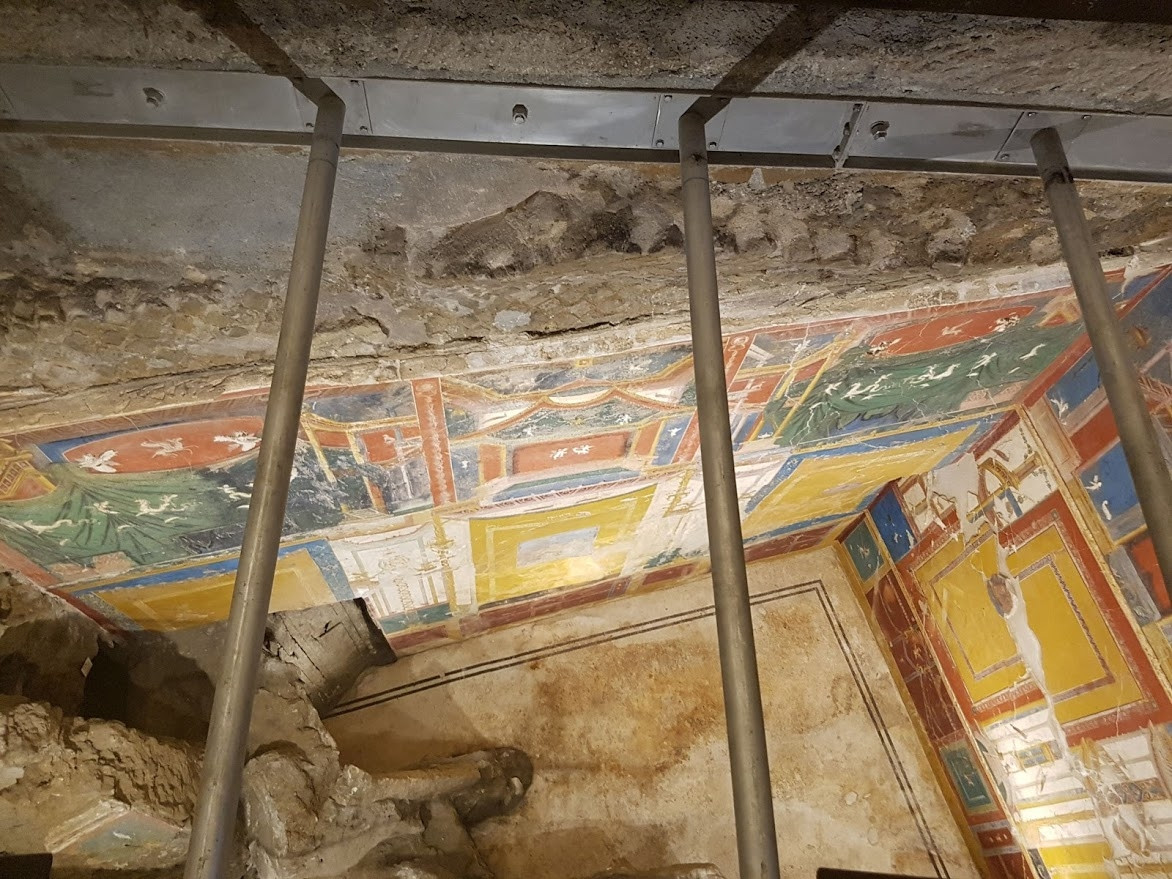
The Roman Villa in Amalfi
In the year 2000 a few rooms of a maritime roman villa were discovered in Amalfi too, during some private constructions. Archeologists think that these rooms belonged to the ninfeo-triclinium of the villa, that is a dining room decorated with fountains. Today the villa is located below some shops, whose tour is allowed by the owners.
The Roman country villa in Tramonti
In the Amalfi Coast area not only are there ancient otium and maritime villas, but also a few examples of country and rural villas have been found. Here, the owners' main occupation was to cultivate the land or to produce olive oil and wine. Back in the 80s, one was brought to light in Tramonti, precisely in Polvica, during some roadworks. Specifically, remains of ancient walls, built with the roman tecnique of the opus incertum and sometimes covered with stucco, fragments of vases and ceramics and even some ancient tombs were discovered. Unfortunately, the ruins of the villa are not open to the public and the admission is granted only for study purpose
The Roman Baths in Vietri sul Mare
Vietri sul Mare has been considered the ancient Marcìna for centuries, as the greek geographer Strabone wrote in his work. As a matter of fact, ancient tombs and some sections of a roman aqueduct were found here, but the most interesting discovery is undoubtedly that of the roman thermal baths named “Terme della Bagnara”, that go back to the 1st century B.C. In a circular room there are two pools: one is made of white marble and provided with steps while the other is rectangular and equipped with a fountain. During the 18th century a faenzera, that is a ceramics workshop, was installed on top of the ancient rooms.
Nowadays, the remains of the Baths are visible only by entering a pizzeria during its opening times.
credit image: Terme romane a Vietri sul mare
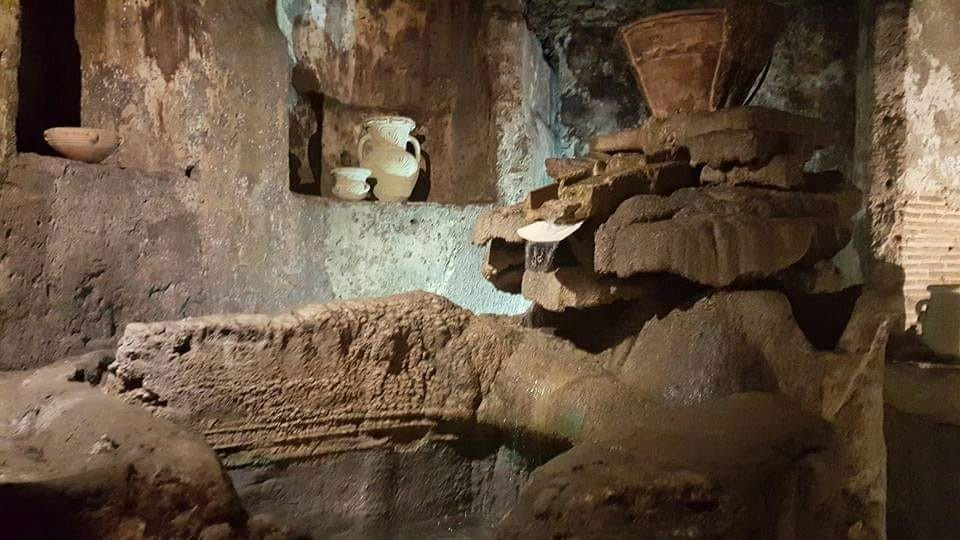
The Roman Villa on the “Gallo lungo”
During the classical period Li Galli Islands were thought to be the home of the mythological mermaids. Here, too, evidences of ancient settlements were found, above all on the larger of the two islands, the Gallo Lungo, where there are the remains of a roman maritime villa. The villa was spread over many levels, but most of it was later hidden by modern constructions (belonged to the dancer Massine and the Russian coreographer Nuyerev). The ancient walls were built with the tecnique called opus reticulatum and presumably surrounded a garden with terraces and porches.
Today, the two small islands are a private property, so the ruins can only be seen from the sea.
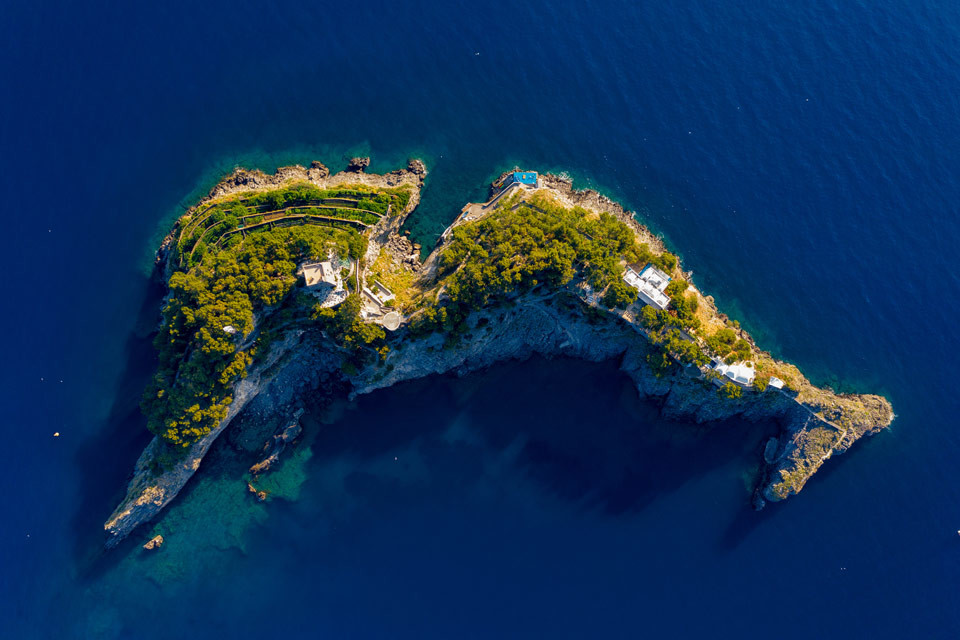
Villa Jovis in Capri
Even on the super famous island of Capri we can find historical evidences that date back to roman times, specifically in the majestic Villa Jovis, emperor Tiberio's summer residence, that overlooks a world-famous and unique view. Located at 300 metres above sea level, the villa is spread over 7000 sq. m. Latin historian Tacito described it as the emperor's largest and most sumptuous villa d'otium: the remains found there coincided with a calidarium, that was the heated thermal pool, and with Tiberio's private rooms, made up of the entrance, a terrace and two more rooms with windows and colourful marble floors.
Villa Jovis is certainly one of the most appealing stopovers in Capri island and it is open to the public from Thursday until Sunday.
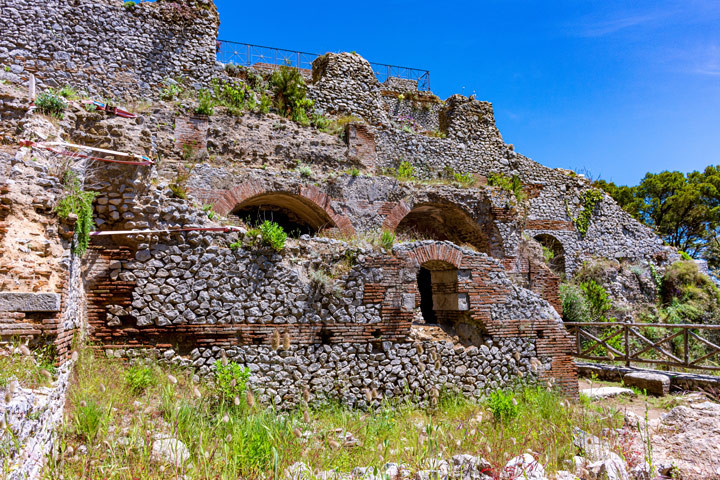
Queen Giovanna's Baths in Sorrento
Not far from the Amalfi Coast, there is another really impressive archeological site in Sorrento: Pollio Felice's roman villa, that occupies the area now known as the “Bagni della Regina Giovanna” (literally “Queen Giovanna's Baths”). Between the 14th and the 15th century, these natural pools were indeed Queen of Naples Giovanna d'Angiò's favourite holiday destination. Right here there are the remains of another maritime villa that dates back to the 1st century A.D., made up of some rooms provided of barrel vaults, still covered with stuccos. The villa was connected to the natural pools through staircases and terraces.
The admission is free and the villa can be reached either through a path or from the sea.
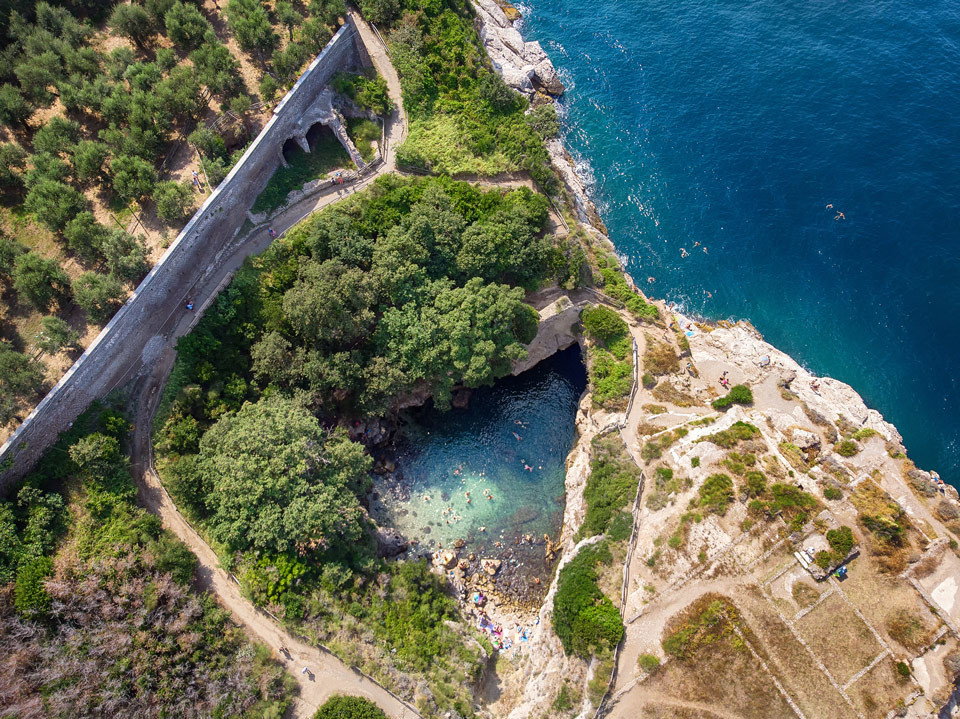
Pompei ruins
Those who are keen on archeology will definitely crave to visit the very famous ancient Pompei. Walking along the intact streets of Pompei feels like going two thousand years back in time. The city covered a total of 66 hectares, but only 44 have been brought to light. It was destroyed by Mount Vesuvius' eruption in 79 A.D., together with the towns of Stabia, Oplonti and Herculaneum. To this day, Pompei still preserves a very large number of frescoes, mosaics, public buildings and private houses – called domus.
Even if it is 30 km far from the Amalfi Coast, the fast ferries company Travelmar organizes guided tours of the archeological site for its clients.
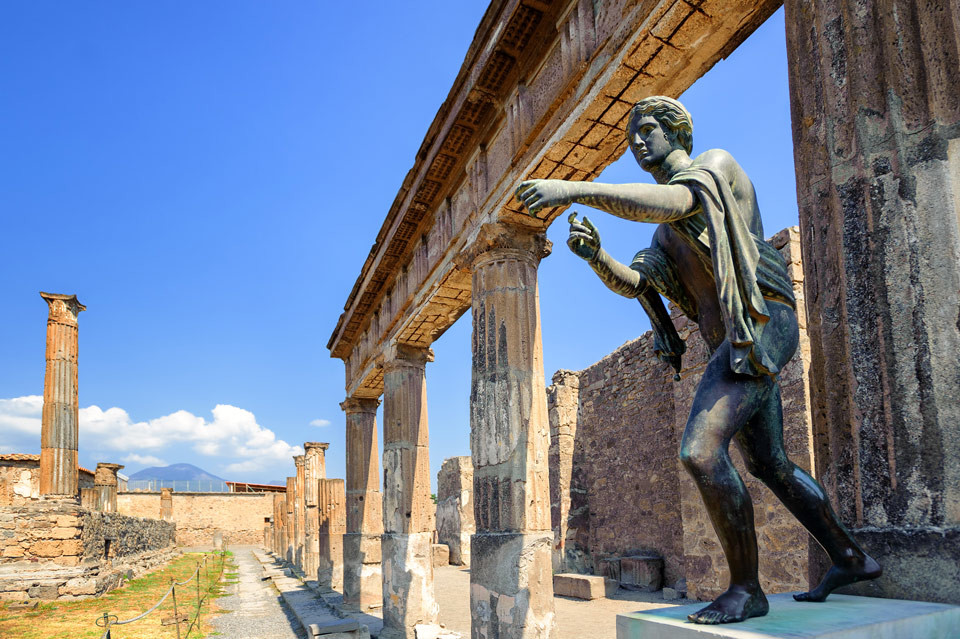
Temples of Paestum
Paestum is an ancient Magna Graecia city, located about 30 km south of Salerno. The archeological site includes the city walls, which are almost entirely preserved, the forum, that is the city main square, and some of the ancient temples, which are unique examples of the Magna Graecia architecture. Dedicated to the greek goddesses Era and Athena, these Doric order temples have been miraculously preserved to the present day. Paestum Archeological Site is open to the public and it can be visited together with the National Archeological Museum that collects the precious Tomb of the Diver. Paestum is easily reachable from the Amalfi Coast through Travelmar's ferries that connect all the small coastal towns to Salerno, from where buses and trains to Paestum regularly set off.
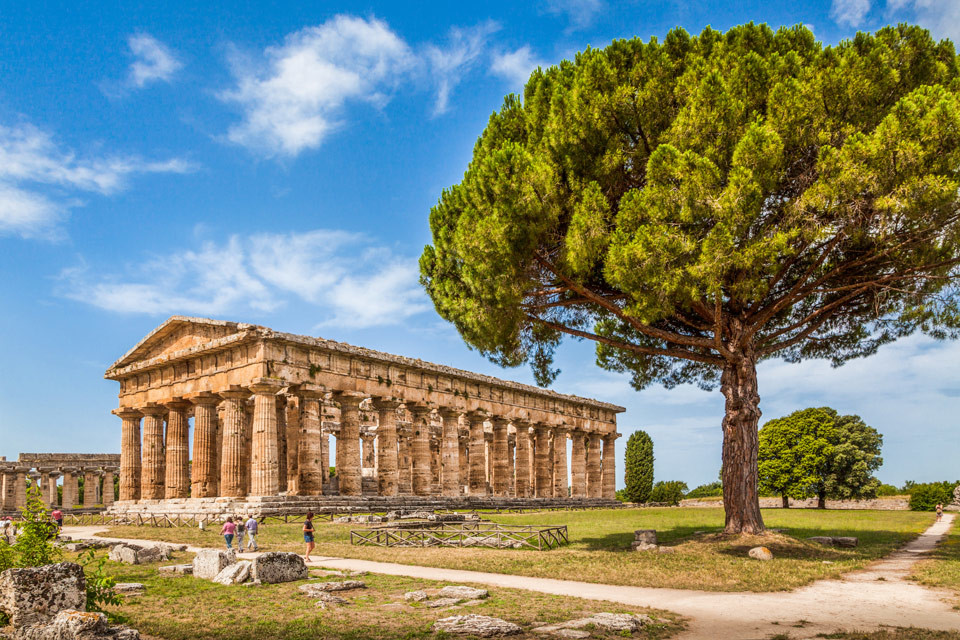
-
In Sant'Egidio del Monte Albino, another town quite close to the Amalfi Coast, evidences of roman settlements were found too. For instance, a section of the roman aqueduct, built with the tecnique of the opus reticolatum, is a few hundred meters long and can still be seen. Finally, there is a rectangular marble fountain, called the Helvius or Saint Nicola's Fountain, decorated with human rapresentations of rivers, most probably the Sarno river, and that goes back to the period between the 1st century B.C. and the 1st century A.D.
fun facts
share this article


